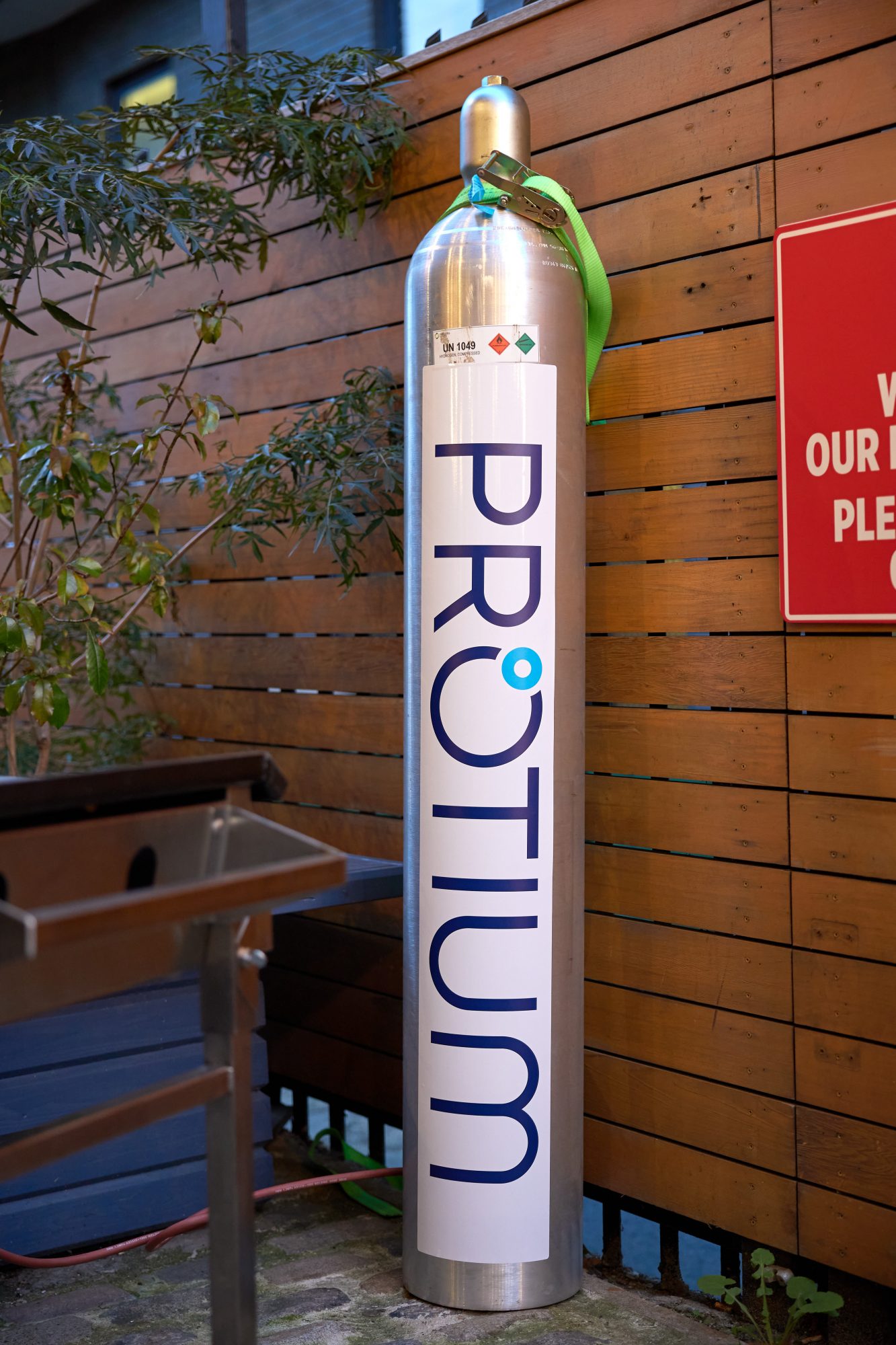Protium explores the importance of hydrogen safety. The piece begins with a comment on hydrogen’s role in the energy transition
The Hydrogen Council estimates that if hydrogen deploys at scale, to the point that it amounts to a fifth of global final energy demand by 2050, carbon emissions can be reduced by 7 billion tonnes annually (Hydrogen Council, 2021). Moreover, if this hydrogen is generated from renewable sources, known as green hydrogen, the gains for the environment are even greater – but we need to explore hydrogen safety first.
Green hydrogen, through the process of electrolysis, uses electricity to break down water into its component elements – hydrogen and oxygen. It can act as an energy carrier and be a replacement fuel to displace natural gas in commercial and industrial processes and substitute diesel and petrol in vehicles.
The demand for hydrogen has grown more than threefold since 1975 and continues to rise; demand for hydrogen reached around 94 million tonnes (Mt) in 2021 (IEA, 2022) and is expected to grow to 500 – 680 Mt by 2050 (World Bank, 2022).
Such a radical scale-up will require a considerable infrastructure expansion, bringing safety considerations around hydrogen production, storage, and transportation to the fore, as well as challenges such as planning and regulations.
Hydrogen safety through the years
Hydrogen has been used safely by the industry for many years. The first hydrogen fuel cell was developed in the 1800s, and industry has been using hydrogen in oil refining, petrochemical, steel, and fertiliser production for over half a century. Years of research and development and practical experience have made it possible to develop rigorous engineering controls and guidelines to mitigate the risks of producing, transporting, and using hydrogen.
Intrinsically, all fuels have some degree of risk associated with them because they contain a large amount of energy. Therefore, a thorough understanding of fuel properties enables the design of systems and guidelines to handle and use fuel safely.
Fuel use and safety concerns
Hydrogen’s unique properties present several key challenges for hydrogen safety to operators.
Compared to fuels such as petrol and hydrocarbon gases, some of the properties of hydrogen make it safer to handle and use. Hydrogen is non-toxic and with a mass 14 times less than air, escaped hydrogen rises at a speed of 20 m/s (45 mph). While this is useful because it leads to fast dispersion of hydrogen concentrations, it means that hydrogen is likely to accumulate under indoor ceilings if there is insufficient ventilation. Active and passive ventilation systems are required to minimise any risk of hydrogen accumulation, and to ensure hydrogen concentrations are kept below the flammability limit (between 4% – 77% in air).
Unlike methane, hydrogen flames burn with limited emission in the visible spectrum, making them appear invisible. Combined with low radiant heat emission, these properties make hydrogen flames difficult to detect using traditional infrared sensors. As a result, a range of sensor technologies needs to be used in parallel to detect flammable atmospheres and flames.
Hydrogen can also diffuse into the surface of metal, leading to the formation of solid hydride. This phenomenon is called Hydrogen- Induced Cracking (HIC) or Hydrogen Embrittlement (HE). It can severely reduce the tensile strength and fracture toughness of metal containment vessels leading to material failure.
This needs to be factored into safety considerations.
Regulations & standards of hydrogen safety
Some confusion can arise in understanding the difference between regulations and standards. A regulation is a set of rules outlined by the government that must be followed as a minimum standard. Regulations are enforceable by law, so following regulation is mandatory.
On the other hand, standards are generally established by private sector bodies. They contain design, technical, and performance specifications, or precise conventions to be used consistently. They ensure uniformity of safety requirements and provide inspectors and safety officials with the information needed to approve systems and installations.
Hydrogen codes of practice
Hydrogen codes of practice are based on knowledge and experience related to safely using and handling hydrogen. These codes are built on the foundation of lessons learned from an extensive history in various industrial settings. Adopting best practices protects people and the environment, infrastructure, and equipment and minimises the risk of incidents. Codes of practice are often developed by trade associations representing member companies’ interests, including manufacturers and suppliers of equipment, installers, and providers of safety, quality, inspection, and training services.
Who looks after our hydrogen safety?
As hydrogen has been used in industry for decades, a robust network of bodies and regulations supports its safe usage. However, where hydrogen is finding new uses as an energy source – for example, in transport and industrial decarbonisation – new approaches to manufacturing the gas are being developed.

Methods such as production using electrolysis are not new. The change in strategy to move from large-scale plants to localised production is now creating the need to review and update regulations within the energy supply chain.
The Health & Safety Executive (HSE) is the primary body in the UK which has ultimate responsibility for our safety across all business environments, not just facilities producing hydrogen. As part of its remit, it must develop and implement regulations to ensure that government safety legislation is acted on properly by developers of hydrogen facilities, and all developers have a legal duty to follow these regulations.
This means that during the design, build, and operational phases of manufacturing, strict processes and governance must be in place to assure safety. This includes performing thorough safety reviews and risk assessments at early origination stages, checking that factors such as the amount of explosive gas stored is compliant and environmental impacts are considered. This work continues through the operations lifecycle, where continuous strict process safety management and audit are applied.
In summary, hydrogen will play a crucial role in supporting the transition to a decarbonised global economy and could make a significant contribution to reducing global warming – hydrogen is expected to satisfy 12% of final energy demand and contribute to a reduction of 10% of the total CO2 emissions in the 1.5°C scenario. However, like any gas, hydrogen safety must be ensured, and hydrogen must be handled carefully to minimise potential risks.
To alleviate these risks, government safety legislation must be implemented and acted on by developers of hydrogen facilities. Although a significant body of knowledge in hydrogen safety has been developed, it is essential to continuously improve safety regulations and standards for existing industries, ensuring safety for new hydrogen technologies, which will be relied on to decarbonise our energy system.
Find Protium on LinkedIn
enquiries@protium.co.uk

This work is licensed under Creative Commons Attribution-NonCommercial-NoDerivatives 4.0 International.











